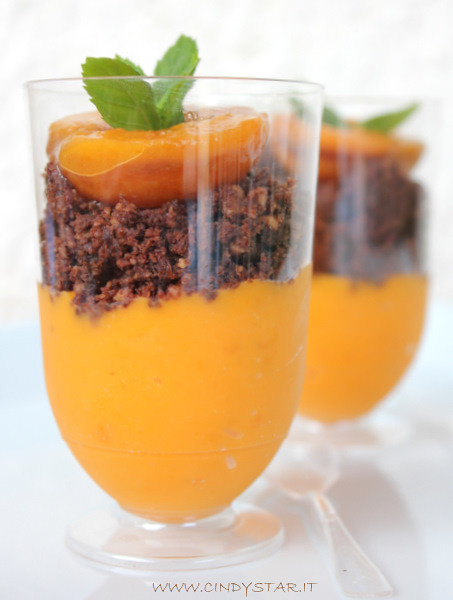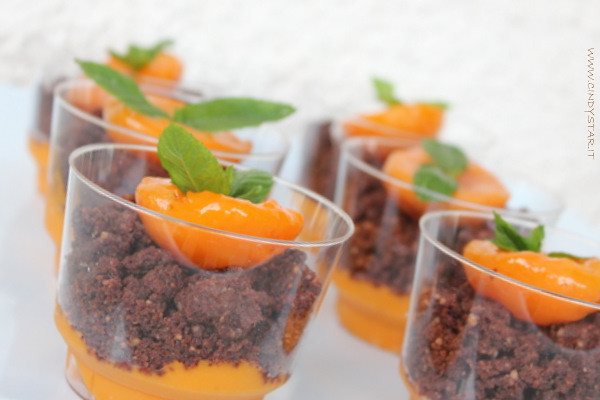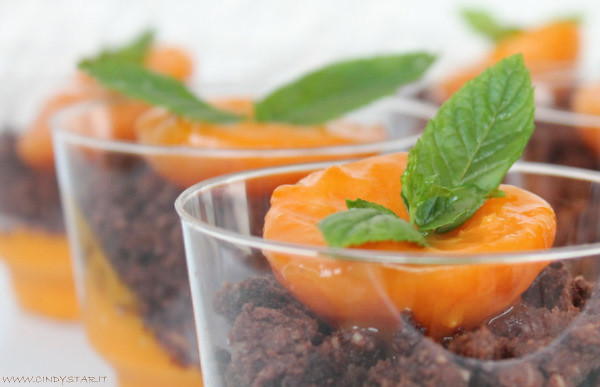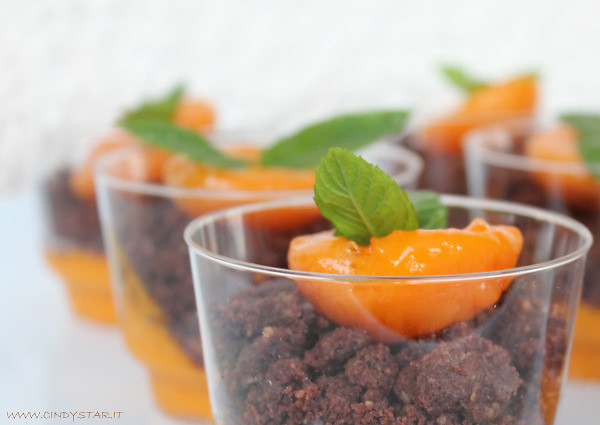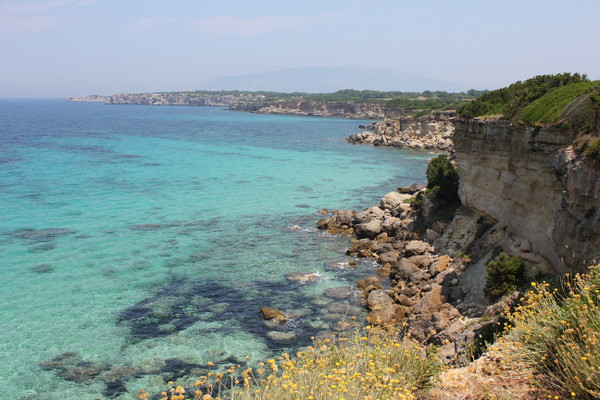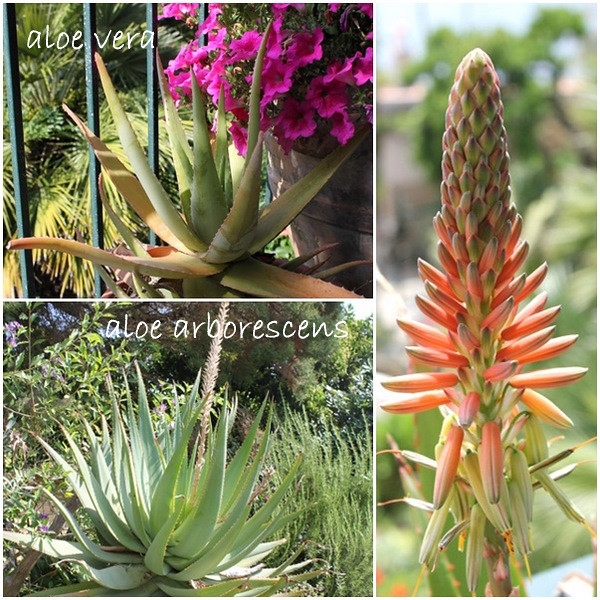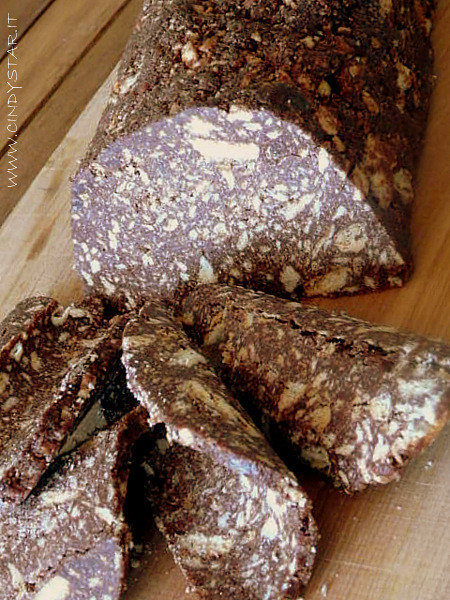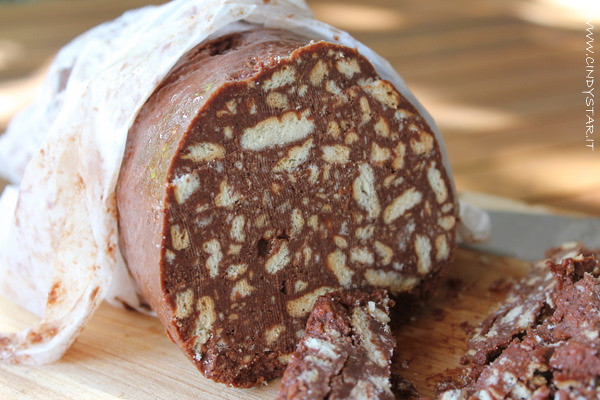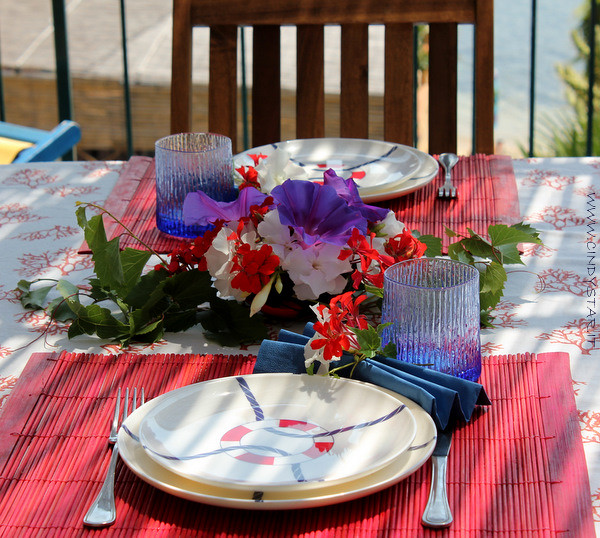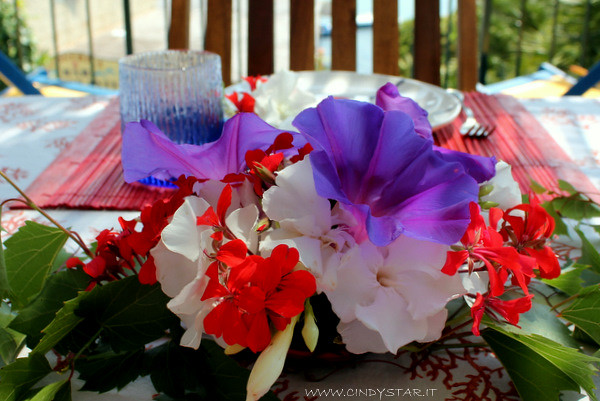- Tagliare alla base una foglia di aloe. Il periodo migliore sarebbe dopo un paio di giorni da una giornata piovosa, in modo che la pianta abbia avuto la possibilità di assorbire più liquido e trasferirlo alle foglie.
- Incidere la buccia e tirarla via. Con un coltello raschiare sopra la sostanza gelatinosa lasciando cadere il liquido che ne fuoriesce ed eventuali grumi di gel in una ciotola.
- Passare il composto al colino schiacciando bene con un cucchiaio ed invasare. Conservare in frigo per una decina di giorni.
- Usare mattina e sera sul viso e sul decolleté prima della crema abituale, stendendo il composto con un pennello o con la punta della dita. Volendo si può mescolare alla propria crema. Ottimo anche come doposole.
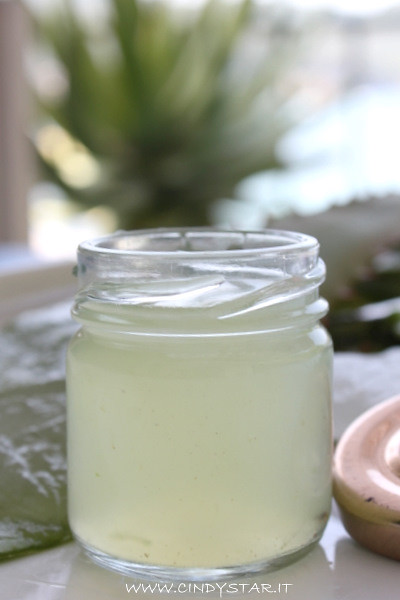

This recipe is my personal entry to WHB # 241 Thanks again to Haalo who manages greatfully all events,Thanks again to Kalyn for her successfull idea! WHB RulesFresh Aloe Juice, Natural Cosmetic
I am still on vacation in
Elba island, Summer is at its best, giving us beautiful bright sunny days and warm and transparent sea water. I am very lucky to stay in a very charming house with a lovely terrace on a litttle bay and a cute garden, rather rocky but rich in vegetation. Mario , the owner of the house, is very fond of gardening, and also built a pond. In recent years he has enlarged it, hosting more goldfish and aquatic plants. All around the pond a rock garden gives home to numerous cacti, his great passion. The other day he taught me how to extract the juice from
aloe, to use as a nutrient basis on the face (still Egyptian Queens Nefertiti and Cleopatra kept face and body skin young and fresh with Aloe!). It's very interesting to read about the numerous therapeutic virtues of this plant, known since ancient times at all latitudes of the planet. We can definetely name it
the miracle plant: it'
s the richest plant in beneficial substances for the body, which work in an extraordinary natural synergy. And it's rich in minerals, vitamins, enzymes, aminoacids and mono-polysaccharides. Aloe is one of the most powerful detoxifying agents, one of the most effective stimulant of the immune system, a strong anti-inflammatory agent, an analgesic, antibiotic, antiseptic, antibacterial, anesthetic, purgative, a growth stimulant, an accelerator for the recovery of tissues, a germicide, fungicide, sedative, a rich source of nutrients and a valuable aid to digestion. Even simply used as an ornamental plant in the house it absorbs carbon dioxide and free oxygen.
Some species such as
Aloe arborescens are used to make preparations with a high content of presumed anti-cancer substances. Its
extract has been found to contain compounds that inhibit cell proliferation
. A Brazilian friar of the Order of Minor Friars, Father Romano Zago, has transcribed an old recipe came to him orally, but used since ancient times in Asia and South America. The recipe, published in his book, is a simple natural preparation (
honey + alcohol + Aloe arborescens) useful for many things, but particularly for the prevention and cure of cancer. In this case, the monk suggests to continue the typical cancer treatments, but proceeding in parallel with this preparation.

